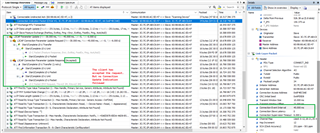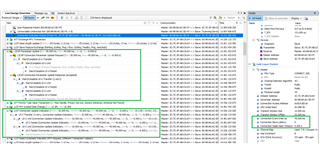Other Parts Discussed in Thread: SYSCONFIG
Hi,
Out application is based on TI SDK 5.10, Simple Peripheral.
As per the BLE specification, Vol 6: Part B: 5 Link Layer Protocol: 5.3 Procedure collisions, we need to handle such case in the application to ensure the interoperability with master is dealt with correctly. I am having following questions:
- Whether TI has any examples on understanding how the collision for LL_CONNECTION_PARAM_REQ (Vo 6: Part D: 6.12 Connection parameter Request: figure 6.20) and LL_PHY_REQ (Vo 6: Part D: 6.15 PHY update Request: figure 6.36) can be implemented in a slave device application?
Regarding above, the simple peripheral application SimplePeripheral_processStackMsg() gets the event from the stack on GAP_LINK_PARAM_UPDATE_EVENT or L2CAP_PARAM_UPDATE_REQ. How to respond to this event processing such that the request can be rejected back to the master?
- How come the application know if the slave initiated LL_CONNECTION_PARAM_REQ resulted into rejection i.e. L2CAP_CMD_REJECT from the master?




